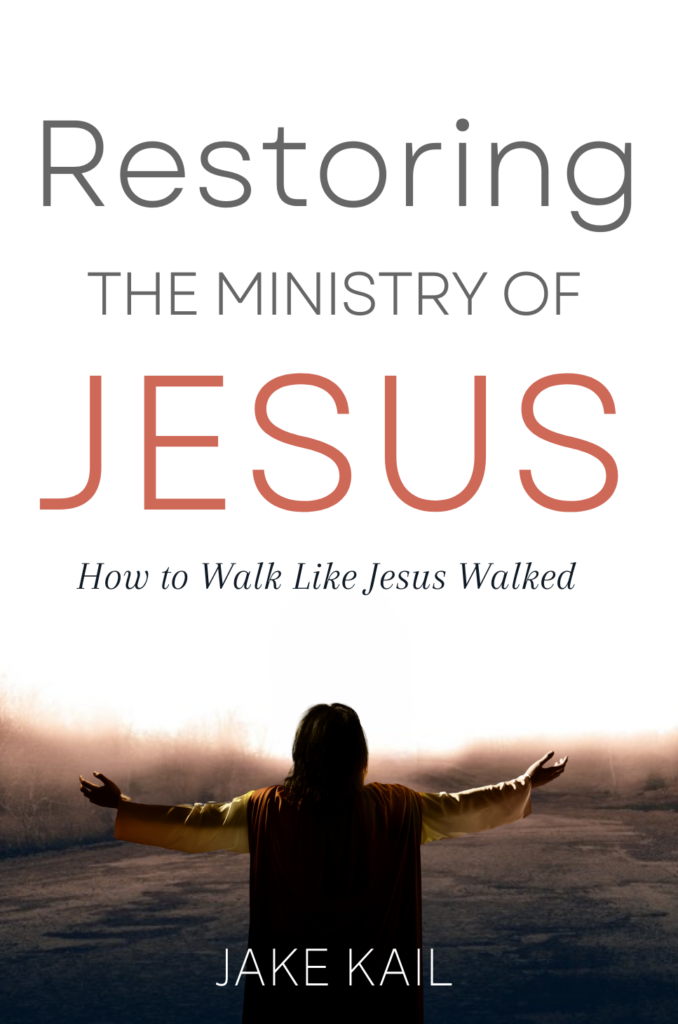
Restoring the Ministry of Jesus Now Available!
June 23, 2022
Four Myths about Demons and Deliverance
July 5, 2022
Believers are called to be like Jesus. This is not a sentimental idea but a biblical fact. While we do not become like Jesus overnight, we are to be progressively transformed into the image of Christ. The following is an excerpt from my book Restoring the Ministry of Jesus that outlines the call to walk like Jesus walked and do what Jesus did:
What Did Jesus Do?
Instead of asking the question “what would Jesus do?” we ought to ask “what did Jesus do?” What He did do is what He would do. So, what is the ministry of Jesus? What did He do?
There are a few times in the gospels where a snapshot summary of Christ’s ministry is given. One example is Matthew 4:23-24: “And Jesus went about all Galilee, teaching in their synagogues, preaching the gospel of the kingdom, and healing all kinds of sickness and all kinds of disease among the people. Then His fame went throughout all Syria; and they brought to Him all sick people who were afflicted with various diseases and torments, and those who were demon-possessed, epileptics, and paralytics; and He healed them.”
When Jesus first began His public ministry, He stood in a synagogue and quoting from the book of Isaiah said,
“The Spirit of the Lord is upon Me,
Because He has anointed Me
To preach the gospel to the poor;
He has sent Me to heal the brokenhearted,
To proclaim liberty to the captives
And recovery of sight to the blind,
To set at liberty those who are oppressed;
To proclaim the acceptable year of the Lord.”
(Luke 4:18-19)
This was Jesus’ mission statement. He was declaring what He came to the earth to accomplish. Luke 8:1-2 says, “Now it came to pass, afterward, that He went through every city and village, preaching and bringing the glad tidings of the kingdom of God. And the twelve were with Him, and certain women who had been healed of evil spirits and infirmities—Mary called Magdalene, out of whom had come seven demons.”
Reading the above passages, as well as other places in the gospels, we see that Jesus’ ministry had four basic elements: preaching, teaching, healing, and deliverance. What would Jesus do? He would preach and teach the Word of God with authority in the power of the Holy Spirit. He would cast out demons, heal the sick, and raise the dead. Throughout this book we will talk about each of these four primary ministries and how they must be restored in fullness to the church. However, just as important as the four elements is the motive and heart behind them, so that must be addressed as well.
Though we will go into much more detail later in the book, let’s take a brief look at each of the four areas. Preaching is a ministry of proclaiming the Word of God, and in Christ’s ministry, it was often related to the good news or gospel message. Teaching, which is closely related to preaching, is explaining and interpreting the Bible so that people become grounded in the Word. Healing ministry is primarily seen as the supernatural restoration of a person’s physical body back to health but can also refer to the healing of damaged emotions. Deliverance refers to casting out demons in order to set people free from bondage, oppression, and torment.
Just like preaching and teaching are closely related, so are healing and deliverance. Preaching and teaching was the proclamation branch of Christ’s ministry while healing and deliverance was the demonstration branch. Both proclamation and demonstration were important to Christ’s ministry and both are necessary today. As it says in 1 Corinthians 4:20, “the kingdom of God is not in word but in power.” Not only must we teach and preach, we must demonstrate the gospel through healing the sick and casting out demons. If we are to truly carry on the ministry of Jesus, we must preach, teach, heal, and deliver.
A New Creation
Let me suggest to you that Jesus did not die on the cross to only produce a bunch of nice people. He had far more in mind than that. In John 12:24 Jesus said, “Most assuredly, I say to you, unless a grain of wheat falls into the ground and dies, it remains alone; but if it dies, it produces much grain.” He was referring to His own death that was about to take place. He was the grain of wheat, or Seed, that was about to fall into the ground and die, and as a result, much fruit would be produced. By God’s design, a plant or a tree can only produce fruit according to its own kind (see Genesis 1:11). An apple tree produces more apples; it cannot produce oranges or any other kind of fruit. In the same way, Jesus died on the cross to produce fruit after His own kind: a new breed of human being on the earth that would be like Him, the original Seed.
Second Corinthians 5:17 says, “Therefore, if anyone is in Christ, he is a new creation; old things have passed away; behold, all things have become new.” When a person receives Christ, they become a completely new creation and receive a completely new nature. There is a reason that Jesus used the term born again when speaking to Nicodemus in John chapter three. The radical nature of the salvation experience demands such a term. It is a creative act of God.
All human beings have inherited a carnal and sinful nature from Adam. At salvation however, this earthly nature is crucified with Christ, and by the Holy Spirit, we become partakers of the divine nature (see 2 Peter 1:3-4). We are taken out of the dominion of darkness and brought into the kingdom of God. We are born again by the incorruptible Seed of the Living Word, Jesus Christ, and by the power of the Holy Spirit. Jesus is called the last Adam, and He came to restore all that the first Adam lost and to reconcile us to the Father. Those who are in Christ are a new creation; they no longer belong to the order of the first Adam, but are now to conform to the image of the last Adam, Christ Jesus. The Seed produces after His own kind.
How is it that we have reduced this glorious gospel to a “get-out-of-hell-free card” or lowered it to a message of self-improvement? Jesus did not die to improve self; He died to replace it. Self cannot be improved, because it is sinful at its core. Instead, it must be put to death and replaced with the nature of Christ. The gospel is not self-help, it is self-denial. Self is not improved, it is crucified. This does not mean that we lose our individual personality or unique identity. On the contrary, we become who God truly created us to be, each one of us a unique expression of His infinite nature.
Do you realize that we are actually supposed to be like Jesus? This is not a sentimental idea but a biblical fact. “He who says he abides in Him ought himself also to walk just as He walked” (1 John 2:6). The New Age movement and other false religions have twisted this concept to make people believe that they are equal to Christ or that they become their own god. It is clear that there are ways in which we will never be like Jesus: He is the unique eternal Son of God, the Messiah, the only Savior who died for our sins, and His name is exalted above every name. Yet it is also clear that there are many ways in which believers are meant to be like Jesus, walk like He walked, and do what He did.
Click image below to purchase:
Everywhere Jesus went, people were miraculously healed, set free from evil spirits, and transformed by powerful teaching and preaching. Restoring the Ministry of Jesus calls us back to the foundation of walking like Jesus walked and doing what Jesus did. It shows how to bridge the gap from our current condition to walking in our inheritance in Christ. As you read, your heart will be stirred to seek God’s face and go after all that He has for you and the church today!




